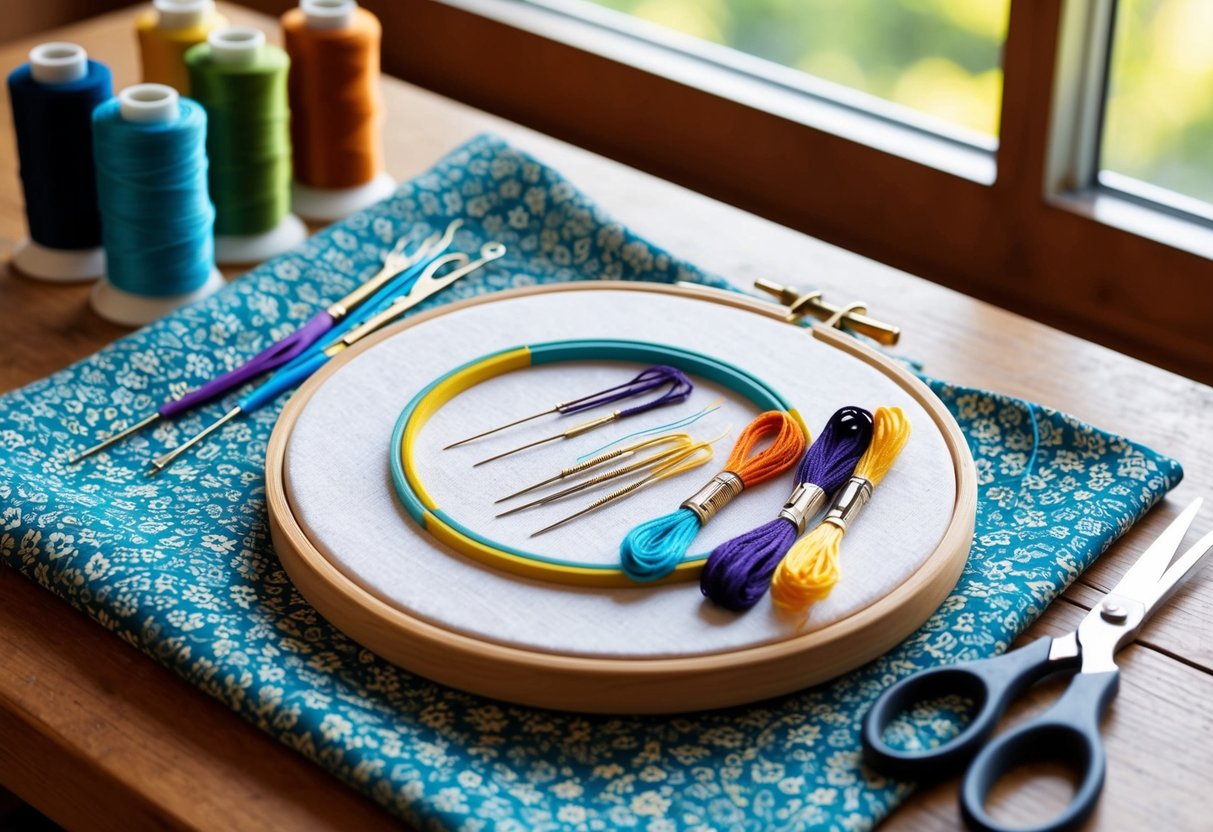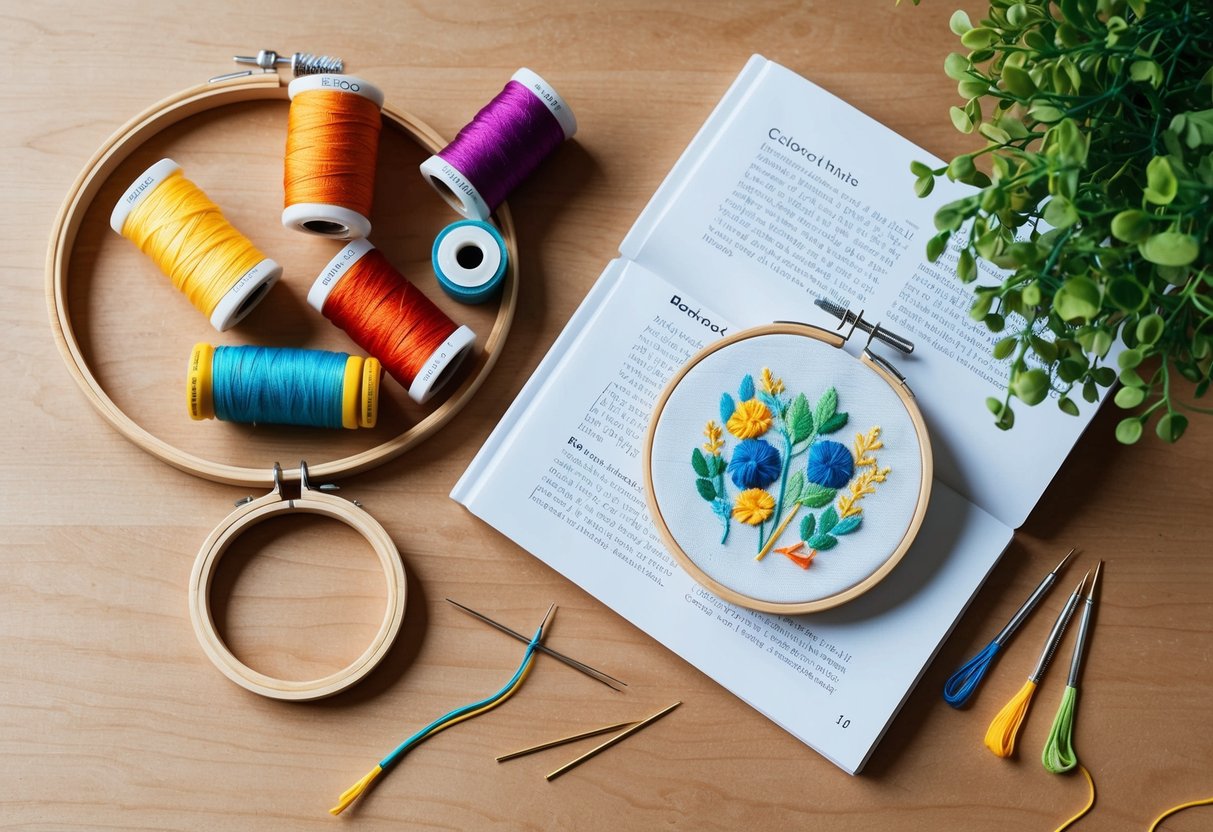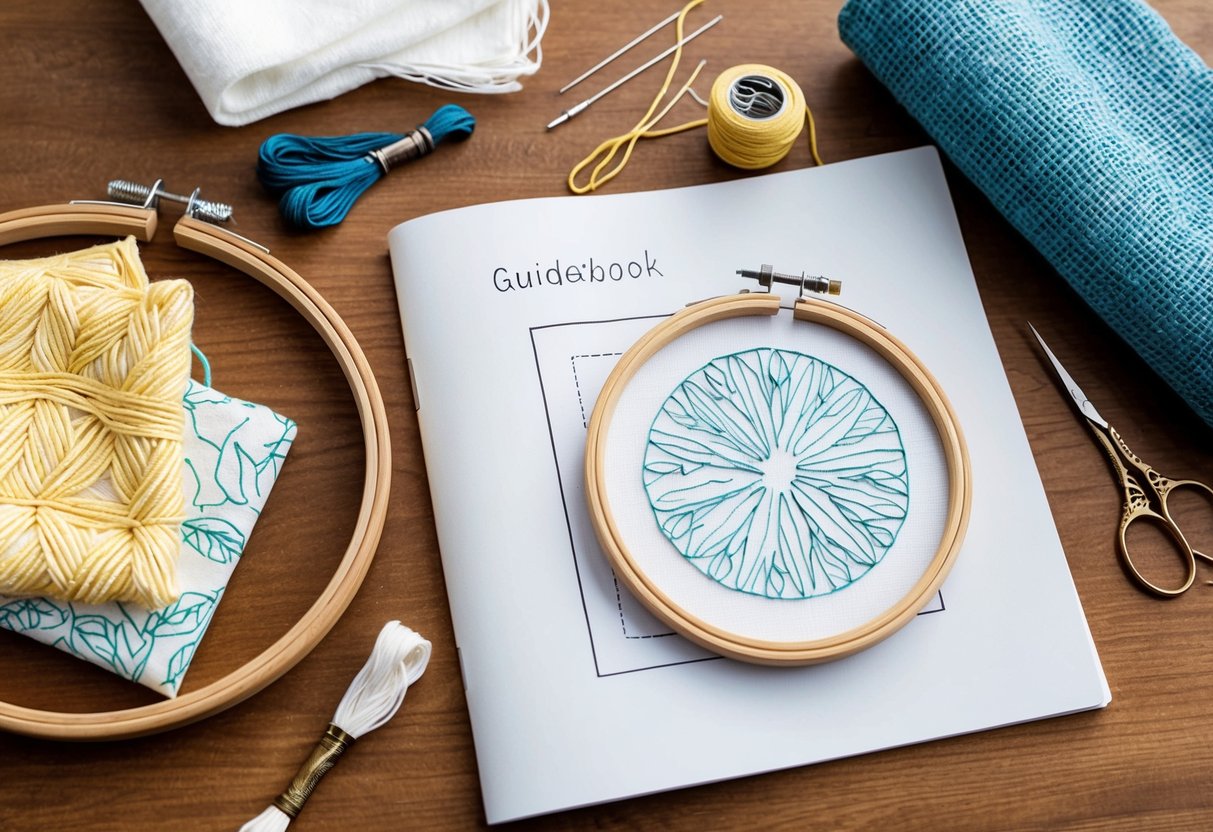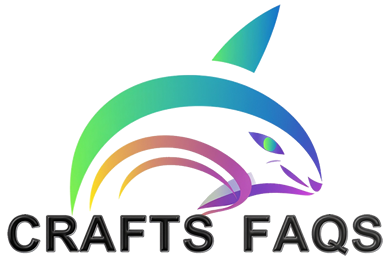
Expanding Skills: Resources and Next Steps

Beginners often seek proven materials and a supportive peer group to refine their techniques and boost learning. Reliable resources and community participation are both key for smoother progress in mastering new embroidery stitches and projects.
Recommended Books and Tutorials
A selection of embroidery books offers clear, photo-rich guides for self-paced learning. Titles such as Embroidery: A Beginner’s Step-by-Step Guide to Stitches and Techniques provide detailed instruction on foundational methods, materials, and stitches for those new to the art.
Both hand and machine embroidery techniques are covered in certain guides, which teach not only required tools but also practical project ideas. For those preferring an online format, video tutorials break down basic stitches, how to use an embroidery hoop, and more—ideal for visual learners.
Interactive online platforms, like Instructables’ embroidery basics, allow learners to access free, step-by-step instructions.
Joining the Embroidery Community
Connecting with a community introduces beginners to a wealth of embroidery tips, troubleshooting help, and pattern inspiration. Platforms like Reddit’s embroidery forum have active groups where people share progress, trade feedback, and post project ideas.
Participation in local craft groups, online forums, or workshops expands hands-on experience. These communities often organize themed challenges, share recommended suppliers, and review embroidery kits suited for novice stitchers.
Newcomers may find motivation in joining sew-alongs or group projects, making the learning process less solitary and more engaging.
Frequently Asked Questions

Getting started in embroidery requires understanding the essential tools, foundational stitches, and techniques for preparing both fabric and design. New stitchers often have questions about material choices, pattern transfer, and avoiding typical mistakes when learning.
What basic materials do I need to start embroidering?
A beginner will need embroidery floss, an embroidery hoop, a selection of embroidery needles, fabric such as cotton or linen, and a small pair of sharp scissors. Water-soluble pens or pencils are helpful for marking fabric.
Many starter kits are available that contain these basic embroidery materials. Choosing reliable and comfortable tools can make a difference in how enjoyable and successful the process feels.
How do I transfer my embroidery design onto the fabric?
Embroidery patterns can be transferred using water-soluble pens, tracing paper, iron-on transfers, or lightboxes. For simple line art, tracing with a water-soluble marker is effective on lighter fabrics.
Iron-on transfer pens work well for more complicated or detailed patterns. The right transfer technique depends on the weight and type of fabric being used.
Which stitches should I learn first as a beginner in embroidery?
New embroiderers benefit by starting with basic stitches, including running stitch, back stitch, split stitch, satin stitch, stem stitch, French knots, and seed stitches. Mastering foundational stitches lays the groundwork for more complex designs.
Many online guides show step-by-step tutorials for beginner embroidery stitches and include visual diagrams.
How do I select the right fabric and thread for my embroidery projects?
Cotton and linen are popular choices for hand embroidery because of their durability and smooth surface. Embroidery floss made from cotton is widely used, but silk and rayon options are available for different effects.
Consider fabric weave and thickness before starting, as densely woven textiles may be harder to stitch. A beginner’s guide to embroidery floss and fabric selection can assist with the decision-making process.
Can I teach myself to embroider?
Embroidery is a skill that many people learn through self-teaching. There are accessible online resources, tutorials, and communities on social media and forums where beginners share progress and get feedback, making it possible to develop skills at home at one’s own pace.
FAQ threads and instructional guides offer tips for beginners looking to start embroidery on their own.
What are some common mistakes to avoid when learning embroidery?
Beginners often use fabric that is too tightly stretched in the hoop or uneven tension with their stitches. This can cause puckering.
Not securing thread ends properly may lead to unraveling. Starting with overly intricate designs can be discouraging.
Sticking to simple, clear patterns and consistent practice helps mitigate common challenges faced during early projects.



